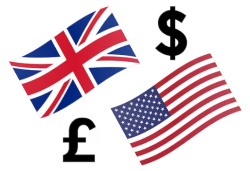
Flexity Analysis for GBPUSD
Forecast Overall(Short-Term, Long-Term): ST=Strong Down LT=Probably Down
Forecast Methods(Short-Term, Long-Term):
[Method0] ST=Down LT=Same
[Method1] ST=Down LT=Same
[Method2] ST=Down LT=Down
FlexityIndicator Analysis Method(0)
Short-Term: The price for GBPUSD is expected to **go down** in the short term. Long-Term: The analysis of the provided information indicates that the GBPUSD exchange rate is forecasted to remain within a broad range rather than showing a definitive upward or downward trend in the long term. The predictions from various sources, including Goldman Sachs, Morgan Stanley, Wallet Investor AI, Panda Forecast, and the Long Forecast, suggest volatility with potential fluctuations between 1.10 and 1.37. While some predict growth and others a decline, the overall outlook is cautious, indicating that external factors such as macroeconomic conditions and geopolitical events will influence trends. Therefore, it is expected that GBPUSD will remain within this range without a clear long-term direction of increase or decrease. **Conclusion**: The price for GBPUSD is not expected to go up or down definitively but will likely fluctuate within the projected range.
Result: [Method0] ST=Down LT=Same
FlexityIndicator Analysis Method(1)
Short-Term: **Short-Term Outlook for GBPUSD: Expected to Go Down** Based on the analysis of various factors influencing the GBPUSD exchange rate: 1. **ECB Rate Cut Impact**: A potential cut could weaken the euro, indirectly pressuring the pound against other currencies, including the dollar. 2. **Institutional Views**: While MUFG highlights UK economic strength, Morgan Stanley suggests possible depreciation against the euro, and Rabobank warns of limited gains due to underlying issues. 3. **Market Volatility**: Active trading in GBP pairs indicates potential for volatility, with recent poor employment data causing a decline in GBPUSD. 4. **Upcoming Events**: The US Non-Farm Payrolls could strengthen the dollar if positive, pressuring GBPUSD further. Additionally, the BOE meeting may impact trends, though it's future-focused. 5. **General Predictions**: Anticipated USD weakness and investor caution despite high stocks suggest mixed but cautious sentiment. Considering these factors, especially recent downward momentum and potential economic pressures, the short-term outlook is that GBPUSD is expected to decline. Long-Term: The analysis of the provided information indicates that the expectations for GBPUSD are mixed in the long term. While there is a bullish outlook suggesting potential increases to levels between 1.35 and 1.40 (and possibly higher) due to positive UK economic data, there are also significant bearish factors such as geopolitical risks and potential ECB policy impacts which could lead to a decline towards 1.18-1.22. Therefore, the conclusion is that: **The price of GBPUSD is expected to have mixed signals in the long term**, with both upward and downward possibilities depending on economic developments and external factors.
Result: [Method1] ST=Down LT=Same
FlexityIndicator Analysis Method(2)
Short-Term: **Answer:** Based on the analysis, the GBPUSD price is expected to **go down** in the short term. The key factors influencing this expectation include: 1. **Technical Analysis:** The pair remains within an old swing range, suggesting a lack of upward momentum and potential downtrend. 2. **BOE Rate Hike Expectations:** A significant increase in the probability of a rate cut by the BOE could weaken GBP against USD. 3. **Market Sentiment:** Concerns over UK data reliability and broader macroeconomic uncertainties may weigh on GBP. While there are supportive factors such as US dollar weakness, the overall fundamentals suggest a bearish outlook for GBPUSD in the short term. Long-Term: **Analysis and Conclusion:** Based on the comprehensive analysis of the provided information, the GBPUSD exchange rate is expected to experience **downward pressure in the long term**. Key factors influencing this conclusion include: 1. **Technical Analysis**: The failure of GBPUSD to break above the 50% retracement level at 1.3768 indicates bearish momentum, suggesting potential downward movement. 2. **Monetary Policy Expectations**: A significant shift towards a higher probability (73%) of a Bank of England rate cut signals more accommodative policies, which typically weaken the pound against the dollar. 3. **Market Indicators**: While positive market sentiment and US-China trade talks may offer some support, they are outweighed by factors like potential Fed policy changes and economic data releases that could impact inflation expectations and currency valuations. In summary, the combination of technical resistance and shifting monetary policies, particularly the anticipated BOE rate cut, suggests a bearish outlook for GBPUSD in the long term.
Result: [Method2] ST=Down LT=Down
